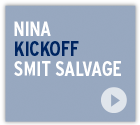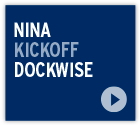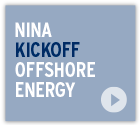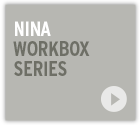NINA at Work articles
- Number 2 / 2024
- Number 1 / 2024
- Number 2 / 2023
- Number 1 / 2023
- Number 3 / 2022
- Number 2 / 2022
- Number 1 / 2022
- Number 3 / 2021
- Number 2 / 2021
- Number 1 / 2021
- Number 1 / 2020
- Number 4 / 2019
- Number 3 / 2019
- Number 2 / 2019
- Number 1 / 2019
- Number 4 / 2018
- Number 3 / 2018
- Number 2 / 2018
- Number 1 / 2018
- Number 6 / 2017
- Special edition / 2017
- Number 4 / 2017
- Number 3 / 2017
- Number 2 / 2017
- Number 1 / 2017
Media Library
TestimonialVideosNews Items
“THIS ISN’T EXACTLY NINA, GUYS."
LET’S COME UP WITH SOMETHING BETTER!
Safe Design: The team for the Marker Wadden project developed an (1) innovative, (2) cost-saving, (3) most of all safe measurement instrument: the WKEG beacon.
Imagine: you are with a work placement student in a sounding boat on an inland water body where an artificial island is being constructed. The boat is pulled forward by ropes by two vehicles located at the left and right on the surrounding sand dam. That was the situation in the Markermeer (North Holland/Flevoland) in which engineer Roeland Lievens (D&II - DR DTED Hydronamic) found himself. He had to perform measurements to monitor the settlement process of the clay. It didn’t feel good, he says. “Enough measures were taken to work in a controlled and safe way, but it did demand a high degree of attention from everyone involved. After the first measurement, I started to doubt whether we would be able to keep bringing it up every time. At first I thought “I’ll do it by myself, because I think it’s too dangerous for the student.” But I’ve become a father now, so I said to myself, “no, if I don’t want to let someone else do it, I shouldn’t do it myself either.”
HESITATION
When Roeland reported this, with some hesitation, to then-head foreman Bart van Asperen, he immediately said “then we’ll find another way”. And that ‘we’ was taken literally: the whole team worked on this: Leon van Gent, Lennart Mastenbroek, Simon van Riet, Willem Kegge. The latter came upon the idea to use sink beacons. Rowland started working on this. He developed a sink beacon made of polystyrene that sinks through the top layer of water and stays floating on the clay soup below (the part that needs to be monitored). A hollow tube was placed on this with a reflector sticker, where the surveyor can perform measurements from the sand dam with a theodolite. And voilà: the WKEG beacon (short for Willem Kegge beacon or the Dutch acronym for ‘water-clay mixture gravity consolidation beacon’) was born.
MORE EFFICIENT
“Everyone was enthusiastic and constructive,” says Roeland. “When you bring things up under the NINA fl ag, the mentality is one of “we’ll address that directly”. If it is then found later that the new way is not only safer but also more efficient, because where before four people worked on measurement for a day, now one surveyor can get it done in half a day, that is an added benefit.”
ABOUT THE MARKER WADDEN PROJECT
In the Markermeer (North Holland/Flevoland), an archipelago of artificial islands is being built to promote the ecological diversity in the region. The cutter suction dredger Edax created the base with locally obtained clay in 2016. Delivery will be in 2020. In the meantime, Boskalis is monitoring how the clay is ‘setting’. The engineers involved can use this survey data to test their theory and to adjust the methodology according to the new reality as necessary.






